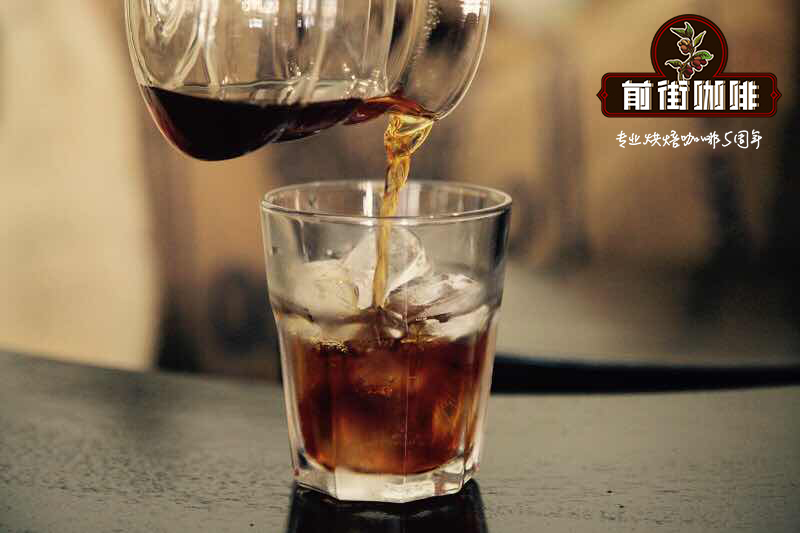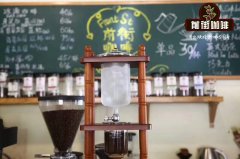How about Ethiopian Yega Xuefei Coffee? a brief introduction to the correct drinking steps of Yega Xuefei

Professional coffee knowledge exchange more coffee bean information please follow the coffee workshop (Wechat official account cafe_style)
A brief introduction to the characteristics and tasting steps of Qianjie-Yega Xuefei
Speaking of coffee, I have to mention the birthplace of coffee-Ethiopia, which has always enjoyed a high reputation in the boutique coffee industry, and its coffee beans are also a regular customer of list, a global coffee shop.
Coffee producing areas in Ethiopia vary widely, with different regions, microregions, and even farms having different coffee flavors, but most of them are high-quality Arabica beans that everyone loves. Today, the editor of Qianjie Street will reveal the secret of the popularity of Ethiopian coffee, taking you into this beautiful and mysterious coffee kingdom. Ethiopia's geographical environment is very suitable for coffee growth. Coffee is mainly grown in the southern highlands between 1100 and 2300 meters above sea level. The main coffee producing areas are Harar, Limu, Djimma, Sidamo, Kaffa, Yergacheffe and Wellega. The soil in these areas is well drained, slightly acidic and red loose. Ethiopian coffee is harvested once a year. The beautiful white coffee flowers bloom from March to April, and then the fruit begins to grow. From September to December, the red coffee fruit is ripe for picking. The new season of coffee begins to be exported from November to December.
Sun-cured coffee has a fuller, more fruity flavor. Compared with washed coffee, good suntan coffee not only maintains fresh citric acid and floral aroma, but also increases sweetness and mellow thickness. We are seeing more and more honey-treated coffee from Ethiopia because of the great benefits that producers can sell directly to the market.
Workers at the Yega Coffee Coffee Farmers Union processing plant are sorting raw coffee beans.
Yejashafi Coffee is one of the most distinctive coffee in the world. It is an outstanding representative of African washed coffee and has always enjoyed a high reputation in the eyes of coffee connoisseurs around the world. Washed high-quality Arabica coffee, suitable for all degrees of baking, perfectly showing a fresh and bright aroma of flowers and fruits, the bean shape is also very beautiful and complete.
The popularity of Yejia Xuefei is largely influenced by the trend of boutique coffee. Its citrus flavor, with aromas of jasmine, has a unique sour taste similar to that of wine, setting a typical rebellious flavor. The traditional Italian re-roasting basically lost the sour taste of coffee, not to mention citrus and fruit, while Yejasuffi became the representative of floral fruit coffee.
Taste
Taste refers to the taste of the tongue. There are no more than four flavors of coffee: sour, sweet, bitter and salty (some people think there is a fresh description). When you sip coffee, each taste may be different, sometimes sour and sometimes bitter, because the amount of coffee is too small to cover the entire tongue (different areas of the tongue have different sensitivity to each taste).
Taste
To put it simply, the taste is the touch of coffee liquid as it passes through the tongue, the so-called mellow thickness. The explanation of alcohol thickness in the Coffee equation is more accurate:
Flavor
After we taste the coffee, we should not only say that the coffee is delicious, but also say where the coffee is delicious. With a sour taste like lemon and a fragrance like milk sugar, these words can well describe the taste of coffee.
Knowledge expansion: flavor is the most difficult part of the three aspects. The aroma of coffee and the aroma fed back through the nose after swallowing coffee give people a different perception, and no one can verbally teach you how to distinguish flavor. All teaching models are the same: smell, calibrate, remember, over and over again.
In short: Qianjie is a coffee research hall, happy to share the knowledge about coffee with you, we share unreservedly just to make more friends fall in love with coffee, and there will be three low-discount coffee activities every month. The reason is that Qianjie wants to make more friends drink the best coffee at the lowest price, which has been Qianjie's tenet for 6 years!
END
Important Notice :
前街咖啡 FrontStreet Coffee has moved to new addredd:
FrontStreet Coffee Address: 315,Donghua East Road,GuangZhou
Tel:020 38364473
- Prev

How to make coffee by hand in Guatemala? is it astringent?
For more information on coffee beans, please follow the coffee workshop (Wechat official account cafe_style) the white flowers, succulent acidity, grapefruit and red currant flavors of LA COLINA Farm in Guatemala. Location: Guatemala Cimartnango funded a new tradition in the Medina family. The family owns and runs La C in southern Guatemala.
- Next

Ethiopia Yega Xuefei recommended to share the characteristics of hand-made Yechuefi Coffee.
Professional coffee knowledge exchange more coffee bean information please follow the coffee workshop (Wechat official account cafe_style) front street-Zechong Yega Xuefei is a small village in Sidamo province, Ethiopia. At first, Yejassefi's coffee trees were planted by European monks (a bit like Belgian monks planting wheat to brew beer), and later by farmers or farmers.
Related
- Beginners will see the "Coffee pull flower" guide!
- What is the difference between ice blog purified milk and ordinary milk coffee?
- Why is the Philippines the largest producer of crops in Liberia?
- For coffee extraction, should the fine powder be retained?
- How does extracted espresso fill pressed powder? How much strength does it take to press the powder?
- How to make jasmine cold extract coffee? Is the jasmine + latte good?
- Will this little toy really make the coffee taste better? How does Lily Drip affect coffee extraction?
- Will the action of slapping the filter cup also affect coffee extraction?
- What's the difference between powder-to-water ratio and powder-to-liquid ratio?
- What is the Ethiopian local species? What does it have to do with Heirloom native species?

